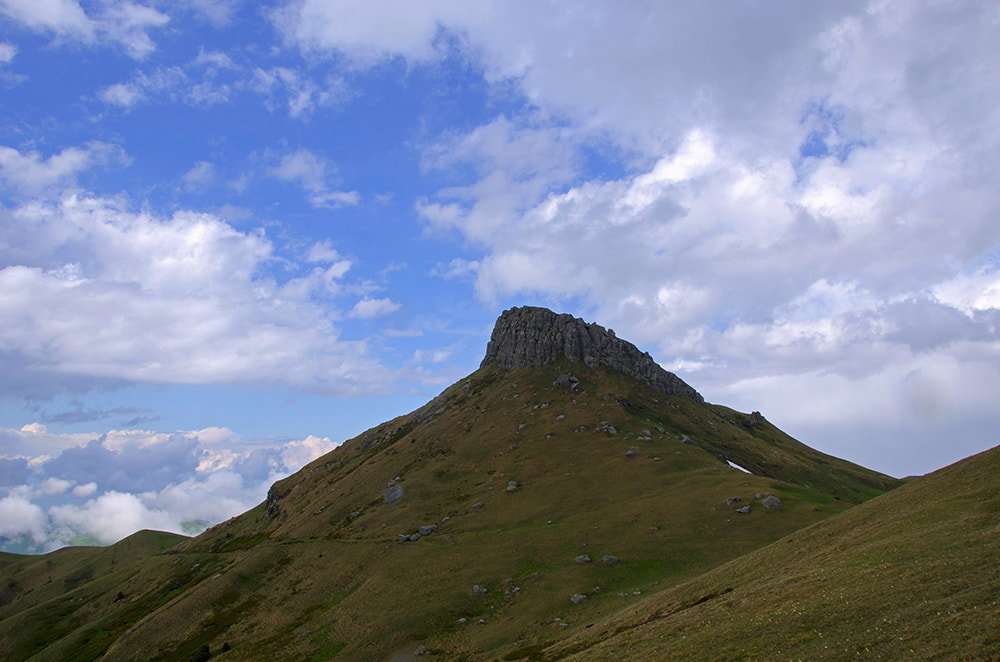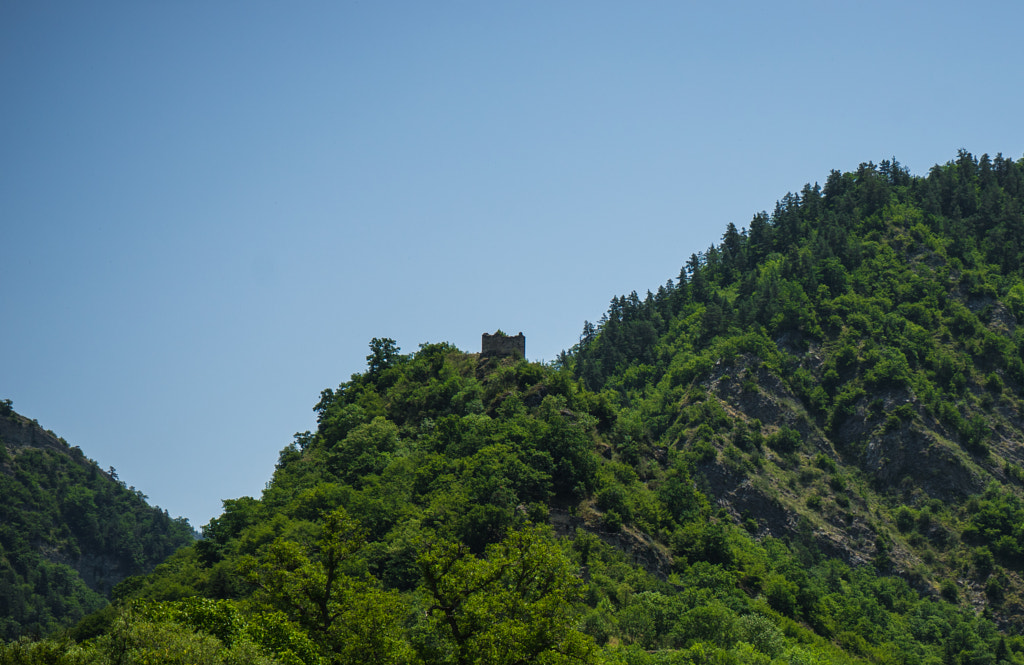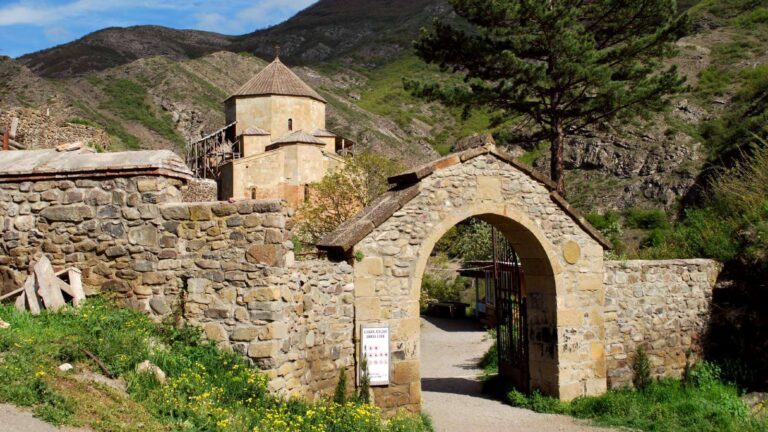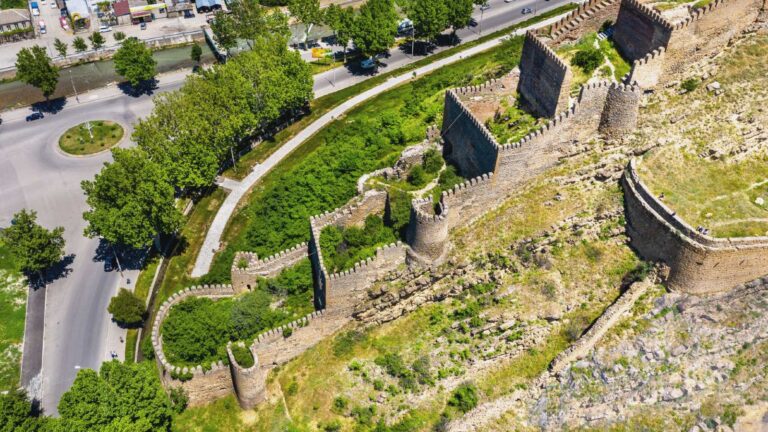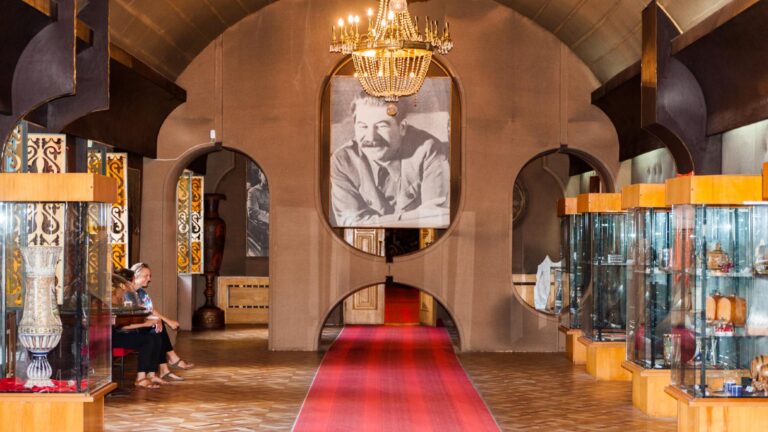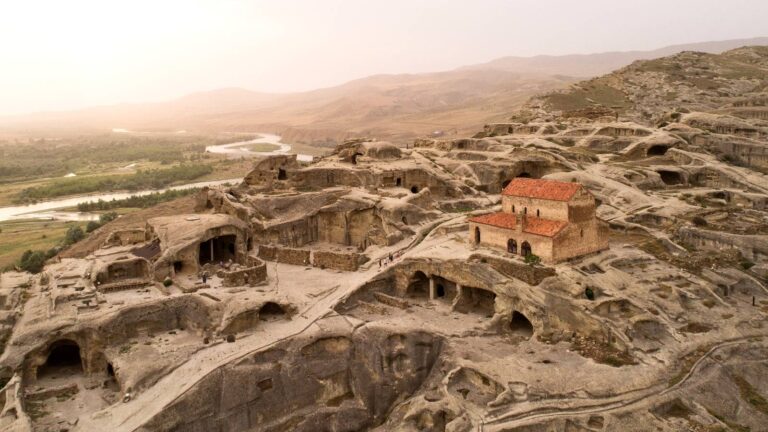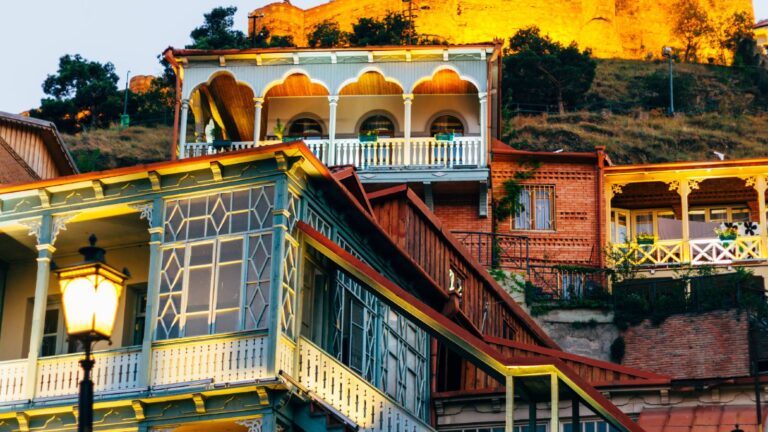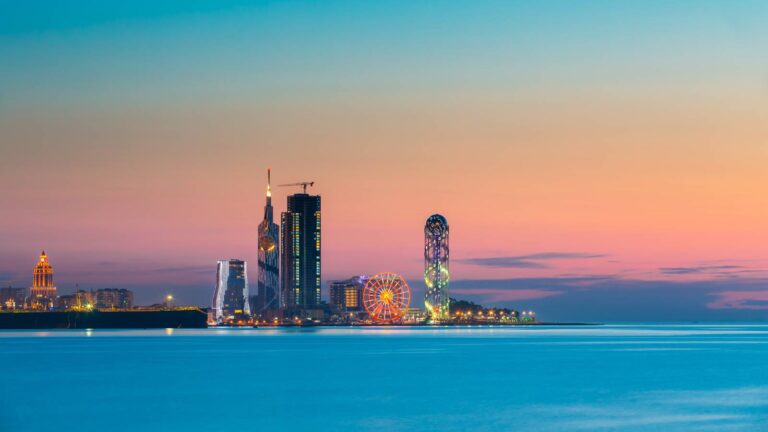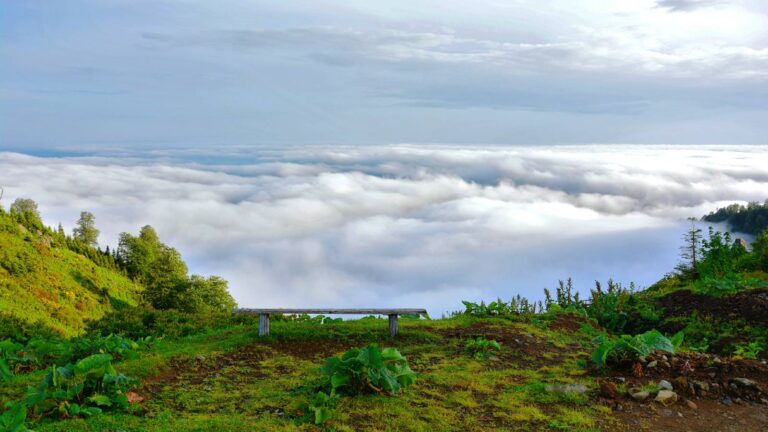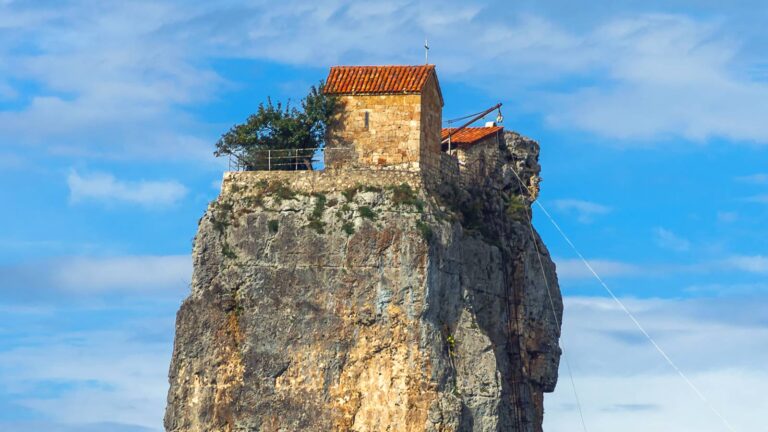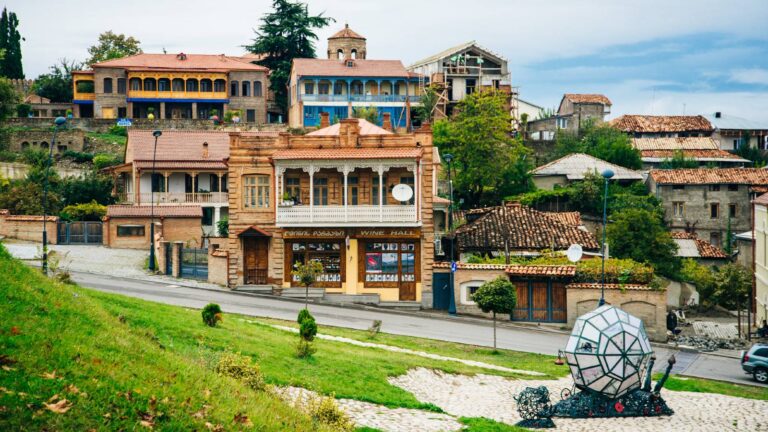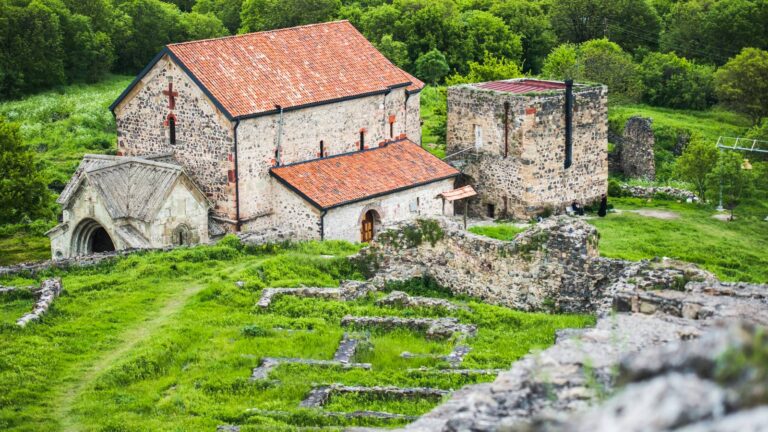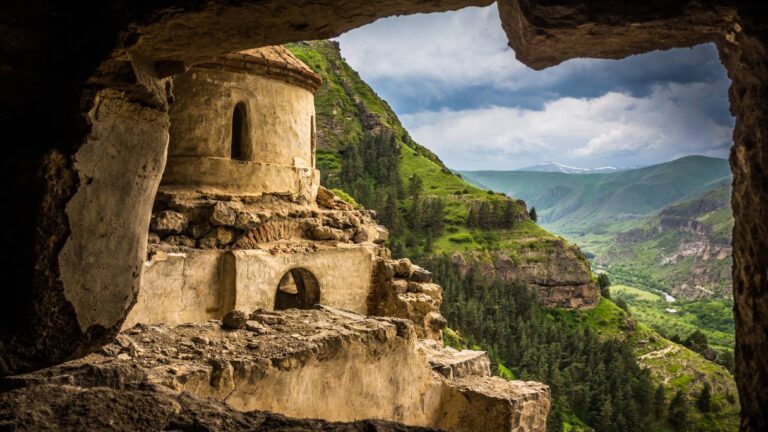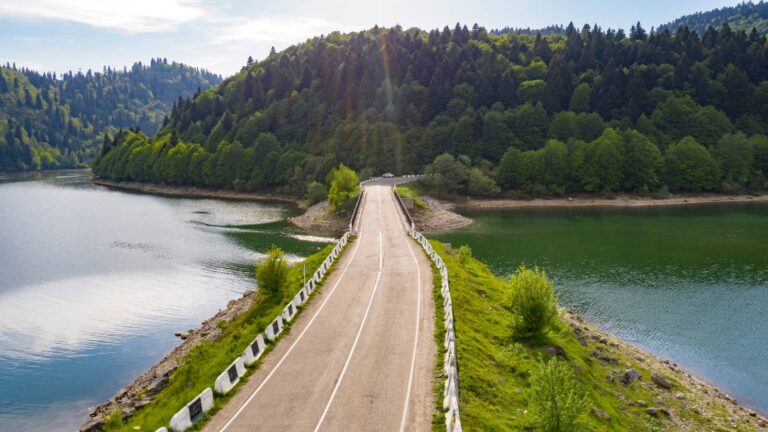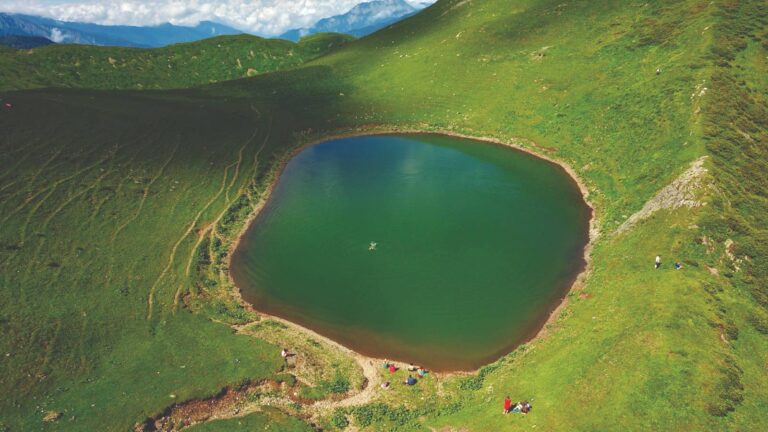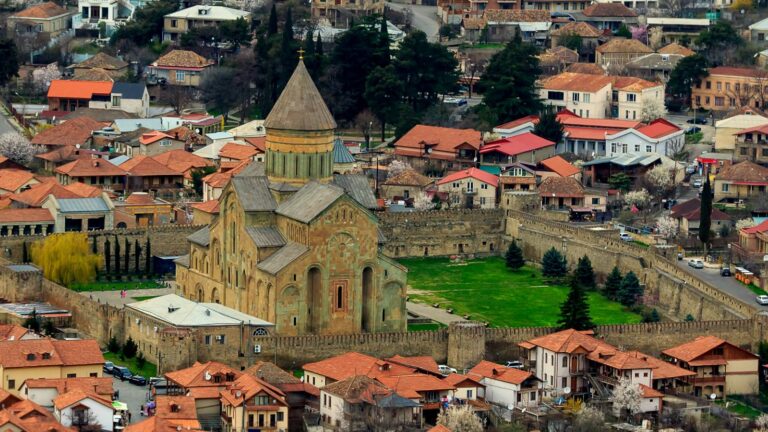By Bus
There are numerous busses and mini-busses going from Tbilisi and Kutaisi to Gori, Kareli, Kaspi and Khashuri/Surami. Likewise, the latter two towns can be reached by bus with the final destination in Western Georgia (such as Kutaisi, Zugdidi, Poti, or Batumi) and Khashuri can also be reached by bus with the final destination of Akhaltsikhe.
By Car and Taxi
Shida Kartli is bisected by the ს-1/E-60, which goes from Tbilisi to Poti and passes just north of Gori. Uplistsikhe can be reached by a short taxi ride from Gori or by taking the Zahesi-Mtskheta-Kavtiskhevi-Gori Road to the Uplistsikhe Complex Road.
By Train
Georgian Railways serve Surami/Khashuri, Kareli, Gori, and Kaspi multiple times a day along various routes (there are no final stops in any of these cities).
There are numerous historical, cultural and important monuments in Shida Kartli. Here you will find both remains of an ancient culture, as well as important examples of medieval architecture and monumental paintings.
Shida Kartli is rich with diverse and beautiful nature resorts and mineral waters. Alpine meadows, lakes and waterfalls hidden in greenery are perfect for those who love hiking and natural tranquility.
Places to Visit
- Liakhvi national natural reserve
- Dzama gorge
- Ateni gorge
- Bateti lake
- Ertso lake
- Nadarbazevi lake
- Damchera waterfall
- Biisi waterfall
- Bijnisi waterfall
- Jamjama mountain
- Uflistsikhe cave town
- Ateni Sioni
- Kintsvisi Monastery
- Samtavisi Monastery
- Tsvromi Monastery
- Kvatakhevi Monastery
- Ruisi archangel Monastery
- Rkoni Monastery complex
- Maghalaant church
- Khopi Monastery
- Grakliani hill
- Cikhiagora settlement
- Skhvilo fortress
- Gori fortress
- Surami fortress
The oldest trace of human life in Shida Kartli was found between the Lamiskana River, the Kavtura and Tedzami rivers, where paleolithic tools were discovered. The area was already quite populated during the Bronze Age (III millennium BC). In the early Bronze Age, the original version of the “Mtkvari-Arax” culture was formed here. The most extensive territorial-administrative unit in Georgia, Khevi was formed in the late Bronze Early Iron age. This is a system of housing hills that promotes and assumes the role of the economic and political center. Several state formations were established in Eastern Georgia by the Antic period, when Parnavaz expanded his authority over the whole of Kartli and Egris was joined to the region. Shida Kartli was converted into one administrative unit and Spaspeti (army chief) became the head of it. The discovery of numerous coins in the Shida Kartli territory is proof that Iberia had intense trade-economic relations with the other side of the world.
In the first century BC, Romean commander, Pompeius, conquered in Kartli. In the I-III centuries, the kingdom of Iberia was further strengthened. Feudal relations have been established since the 4th century in the ancient Kartli state. This process was contributed by the proclamation of Christianity as a state religion in Kartli in the 1930s. The anonymous Armenian geography of the 7th century, which mainly reflects the situation of the IV-V centuries, presents Kartli again divided into Khevi (ravine) and the following names in Shida Kartli (Zena village): Tuniskhevi (Taniskhevi), Dvani, Achabetiskhevi, Gverdisdziri, Sackhumeti, Ksnis Khevi, Ckhradzma, Bazaleti.
The whole Shida Kartli was united by Vakhtang Gorgasali as one administrative unit in the fifth century. In the 7th century, Georgia was conquered by the Arabs and the burden of Arab domination was completely in the inner regions of Kartli. By the period of David the Builder, Georgia was united as a monarchy. Shida Kartli was leading the economic and cultural life of the country. Culture developed in the medieval centuries in the form of secular literature, philosophy, carpentry, monumental painting, stamping, manuscript artwork and stone carving.
In the XVII-XVIII centuries, the North-Western part of Shida Kartli was called Upper Kartli. From the first quarter of the XVII century, after the Ottoman conquest of Samtskhe-Saatabago, Upper Kartli was separated from the Kartli kingdom and was now considered the North-Western part of Shida Kartli. Currently, the Northern part of historic Shida Kartli is included in the South Ossetian Autonomous District and the Dusheti Municipality. As of now, the Shida Kartli region includes the municipalities of Gori, Kaspi, Kareli and Khashuri.
Shida Kartli is rich with cultural monuments. There are legends associated to these sites, such as the Surami Castle. According to legend, they put an only child of a mother in the castle to make the fortress hard to conquer and destroy. It is also said, that a woman in black clothes comes to Surami’s castle every night and calls his son.
Folklore
Every region is different from each other by its culture and traditions. Kartli is not an exception. This region is known for its folklore. Like every site in Georgia, people sang while working in the Kartli region. The most popular songs are Kartluri, Namgluri, Harvest song, Kartluri Chona, Makruli.
Celebrations
There are many public celebrations in Kartli, such as Atocoba, Didgoroba, Gorijvroba and Kudianoba. On Atocoba, sick people were taken to St. George’s church and begged him for healing. They also took domestic animals to sacrifice. On the holiday Didgoroba, you will horse-riding, wrestling and different ceremonies. There are also many ritualistic events.
Gastronomy
Kartli cuisine is diverse, with different fish, meat and vegetarian dishes. Wine making is as popular here as in the rest of Georgia. You will get to know about different types of grapes such as: Shavkapito, Budushuri, Goruli Mtsvane, Gorula and Chinese. Fruits and vegetables are also quite popular in the Kartli region, especially apples, peaches, pears and plums.
The Mtkvari River valley is located in the southern part of Shida Kartli gorge. The valley is followed by a series of small ridges to the North. The Northern slopes of these ridges gradually go to the Tiripon-Mukhrani gorge. In the Eastern part of the gorge, the plain becomes narrow and goes to the plains of Samilakhvari and Mukhrani-Saguramo.
The Northern part of Shida Kartli is represented by the main ridge of the Caucasus. The Caucasus is characterized by a relatively low altitude. The Northern slopes of the Trialeti Range are divided by the valleys of the river Dzama, Tana and Tedzami gorges.
Shida Kartli is characterized by landscape diversity. There is a mildly dry steppe landscape of Iveria in the plain. From 800 m above sea level, the lower mountain forest landscape begins to spread and the oak is dominant. From the altitude of 1200 meters, we can see the landscape of the middle mountain forest, mainly beech.
In the Western part of Trialeti range and in especially humid regions, there is a beech-dark forest. The high mountain meadow landscape with alpine and subalpine vegetation extends from 2000-2200 meters. The glacial-nave landscape practically does not exist in the region.
The climate of the region is continental, moderately warm and humid (some places dry). The average annual temperature is around 11 ℃, with a maximum temperature of 42 ℃, and a possible minimum of -32 ℃.
Economy of Shida Kartli is highly depending on Tourism. Agricultural production is also developed.

